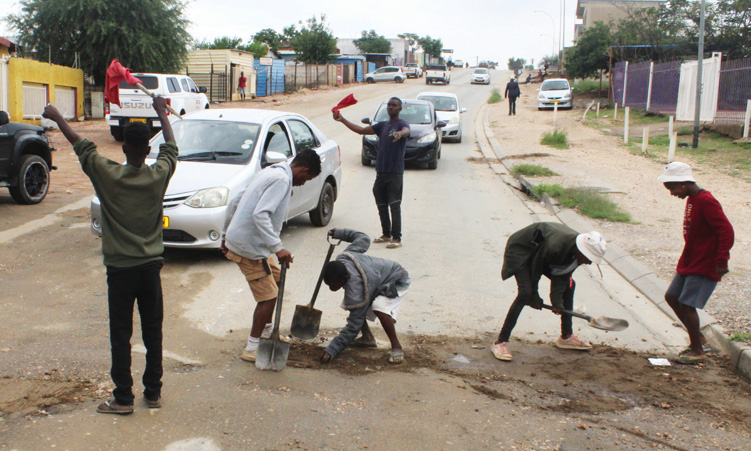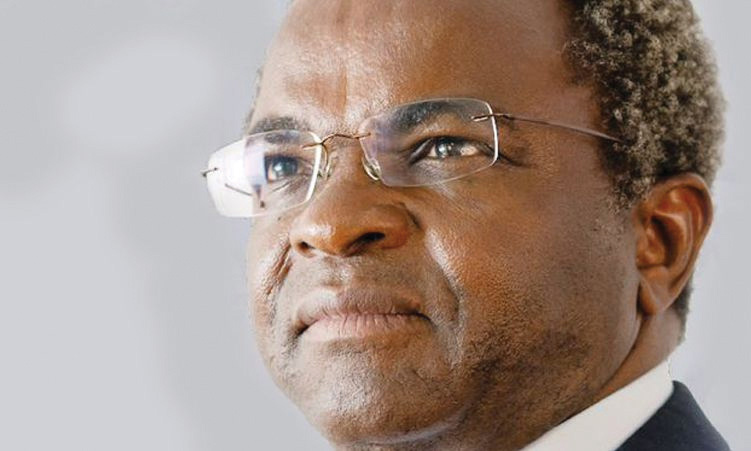THE short-term outlook for the Namibian economy for 2007 and 2008 looks positive, despite the expected slowdown in the global economy, a leading economist has said.
Martin Mwinga, who is the Portfolio Manager for RMB Asset Management Namibia, also said inflation would remain favourable, and despite the negativity likely to emerge from a lukewarm global economic performance, he expressed optimism about the Namibian economy. RMB Asset Management Namibia forecasts a GDP growth rate of around four per cent for 2007, slightly up from an estimated 3,9 per cent in 2006.The growth rate is seen to shoot to up 4,5 per cent in 2008.Inflation is seen at an average of 6,5 per cent, which is higher than the 5,2 per cent estimate of last year.It is expected to slow down to 5,8 per cent in 2008.These views of positive economic developments were pinned on an expected boost in mineral production, with both diamond and uranium production expected to surpass last year’s production levels.”The increased production from Namdeb and the recently announced diamond discoveries from other small players will lead to a record output of diamonds in 2007,” said Mwinga, adding that uranium production was seen to go up by more than 20 per cent.Foreseen increased uranium production has been attributed to the latest developments at the newly commissioned Langer Heinrich uranium mine and at Roessing.Skorpion Zinc Mine is also expected to peak to full production of 150 000 tonnes, while production of copper from Ongopolo Mine would surpass last year’s figures.Other major sectors seen to register growth and contribute positively to the economy are agriculture, fishing, manufacturing and tourism.Government’s spending on infrastructure development, and the “increased appetite for investment opportunities in emerging market economies will benefit small open economies like Namibia with favourable investment climate”.The repo rate – which was hiked by the Bank of Namibia a number of times to end 2006 at nine per cent – is, according to Mwinga, set to rise further and end the year at 10 per cent, which should remain the status quo until 2008.The Namibian dollar is expected to trade between 6,80 and 8,00 to the US dollar during the two-year period.Mwinga’s comments echoes those of another economist and Old Mutual Africa Operations Managing Director, Johannes !Gawaxab, who earlier this month said Namibia’s economy might grow by 4,3 per cent this year on the back of mining, tourism and the services industry.Mwinga, however, acknowledged that threats to such a positive outlook were ever present.”Our economic forecasts are subject to a number of risks.In the near term, the main risks emanate from higher energy prices due to political instability in the Middle East and other parts of the world.”Rising and unsustainable current account imbalances are becoming an even larger threat to the world economy, and could lead to disorderly economic adjustment that may translate into higher currency volatility and lower world economic output than projected,” he said.RMB Asset Management Namibia forecasts a GDP growth rate of around four per cent for 2007, slightly up from an estimated 3,9 per cent in 2006.The growth rate is seen to shoot to up 4,5 per cent in 2008.Inflation is seen at an average of 6,5 per cent, which is higher than the 5,2 per cent estimate of last year.It is expected to slow down to 5,8 per cent in 2008.These views of positive economic developments were pinned on an expected boost in mineral production, with both diamond and uranium production expected to surpass last year’s production levels.”The increased production from Namdeb and the recently announced diamond discoveries from other small players will lead to a record output of diamonds in 2007,” said Mwinga, adding that uranium production was seen to go up by more than 20 per cent.Foreseen increased uranium production has been attributed to the latest developments at the newly commissioned Langer Heinrich uranium mine and at Roessing.Skorpion Zinc Mine is also expected to peak to full production of 150 000 tonnes, while production of copper from Ongopolo Mine would surpass last year’s figures.Other major sectors seen to register growth and contribute positively to the economy are agriculture, fishing, manufacturing and tourism.Government’s spending on infrastructure development, and the “increased appetite for investment opportunities in emerging market economies will benefit small open economies like Namibia with favourable investment climate”.The repo rate – which was hiked by the Bank of Namibia a number of times to end 2006 at nine per cent – is, according to Mwinga, set to rise further and end the year at 10 per cent, which should remain the status quo until 2008.The Namibian dollar is expected to trade between 6,80 and 8,00 to the US dollar during the two-year period.Mwinga’s comments echoes those of another economist and Old Mutual Africa Operations Managing Director, Johannes !Gawaxab, who earlier this month said Namibia’s economy might grow by 4,3 per cent this year on the back of mining, tourism and the services industry.Mwinga, however, acknowledged that threats to such a positive outlook were ever present.”Our economic forecasts are subject to a number of risks.In the near term, the main risks emanate from higher energy prices due to political instability in the Middle East and other parts of the world.”Rising and unsustainable current account imbalances are becoming an even larger threat to the world economy, and could lead to disorderly economic adjustment that may translate into higher currency volatility and lower world economic output than projected,” he said.
Stay informed with The Namibian – your source for credible journalism. Get in-depth reporting and opinions for
only N$85 a month. Invest in journalism, invest in democracy –
Subscribe Now!










